Opinion
The need to reflect at the end of every few years
Major General S S Nair, Director, Birla Education Trust, Pilani writes on the need to reflect at the end of every few years
Published
6 years agoon

There is a tendency amongst people in organisational and institutional leadership positions to believe that the more years you spent on the lead, the more competent and efficient you become and that if you have seen it for so many years you have seen it all. There is nothing more fallacious than this. There is nothing more self-defeating than this.
Many of us in leadership positions of small and medium organisations suffer a ‘second-half disaster’ due to this, sadly common syndrome. A friend was lucky to be assigned the principalship of the school he had studied in. While exchanging notes during his journey to assume the position, I found him happy and confident. But the reasons for that worried me. He claimed that as an Old Boy he knew the school “like the back of his hand”; that is, he knew it brick by brick. Though I tried to caution him on his assessment, he brushed me aside. Naturally, he had to suffer an early, ignoble exit.
The organisation you head may be a better one, an improved version of what you inherited, after three or more years of your leadership. It is but natural that it deserves a better leader now to take it further up. Have you bettered yourself in these years in your knowledge, skills, strategies, outlook, and world view? Or, are you the same as you were six years ago? Or you have deteriorated in essential areas of competence? The answer to this is important as it will decide whether your chair needs a change! Oh no, not the chair, its occupant.
Those who are with you could have become tired, complacent or have developed blind faith in your abilities. Their energy, effort, support, and input may not be available to you in the same quantity and quality as you have received earlier. You must renew them and recruit new talent to your team. Have you done that?
On the contrary, those who are not with you are smart and never get tired. They are waiting for an opportunity to strike, looking for that Achilles Heel in you. May be their numbers might have increased as it is directly proportional to your success. New opponents, new challenges need new strategies and plans.
Status quo seekers and those who resist, dig their heel and grow roots, whereas those who want to stay with change and growth may look for better pastures, if not given opportunities. Has the volume of deadwood in your school increased and the creamy layer thinned during your time?
Reverse it or else the weight of deadwood will take you down. Redo the competency matrix styles and remap competency.
We are in the fallacy that the organisation is the same because we are the same. Look at the faces around you, your students. Not even one is the same. The whole school is new. Look at the teachers and staff.
More than 33% have changed. Then, how do you claim that you know them like the back of your palm? We keep telling the teachers that every student is different, and their teaching styles should cater to each one of them. In our case, the whole organisation has changed. Change in your style is a must.
Targets and objectives are set with time limits decided to achieve them. Some of them have been fully achieved, some partially and some may be beyond achievement and deserve to be dropped. There is no meaning in flogging a dead horse. New objectives in fulfillment of your vision and mission need to be selected, new benchmarks and milestones set, announced and plans for their attainment rolled out.
Direction, speed, and content of your efficiency may need a course correction. Do it. Reset directions, if need be. Accelerate so that you are not only there, but the environment perceives your presence. Go on a “People, Process, Technology, Behaviour” framework.
Riding the technology wave is one sure method of keeping you renewed and contemporary. Do you know that Python is not a snake but a computer language to be taught in your schools? Do you know that STEM is not that part of the plant that holds branches, leaves, plants, and fruits but Science, Technology, Engineering and Mathematics and that it becomes STEAM when Arts is added to it?
Have a huge toolbox. Change your tools to meet the changed situation.
Recently, I read a Buddhist story of a person who builds a raft to cross a river. Once he crosses the river, he feels so proud of the raft that he decides to carry it for the rest of the journey that is to climb a hill and he fails. Leadership behaviour is like this raft- it can become a part of it and pull you down. Change it at the right time despite it being the one that brought you up till here.
Small and medium-sized educational organisations that are run as one-person family businesses, Trusts and Societies that are managed in traditional styles rather than on corporate principles are likely to confront this challenge even more. The impact of the management principle “everyone grows to her/his level of incompetence” has contributed towards this situation.
Thus, leaders who head these types of institutions need to be on a constant “renew, review, reengineer, restructure, recycle, reinvent, renovate” mode to continue to be effective and successful. Standard Operating Procedures inherited/prepared need to be revisited and revised to make them contemporary. Responsibilities' charts need to be redrawn so that the tired and fatigued ones are replaced with fresh minds and performing ones rewarded with rest.
A false sense of performance is a pitfall into which many organisations with non-tangible, non-measurable performance indicators fall. Schools come under this category. Admissions and results are the figures seen, one at the beginning and the other, at the end. Both numbers being good (enough) one feels wellness. Systems and processes that helped you are now given a go-by as you start looking more at the figures. Fall in quality is slow and steady; unnoticed till a point of no return is reached.
So be forewarned and forearmed, Praemonitus Praemunitus.
Look at that mirror that tells the unvarnished truth before you start your next year at the helm. Have you run out of ammunition? Are you blank? Reinvent yourself, refresh, and restart as if it is your day one in the office. The chances of you being a better performer are higher.
But look at a reliable mirror, a mirror that reflects the truth and not the Photoshopped version of your own.
About the author:
Major General S S Nair is Director, Birla Education Trust, Pilani
You may like
-


Indian Astronaut Shubhanshu Shukla to Connect with School Students Live from Space
-
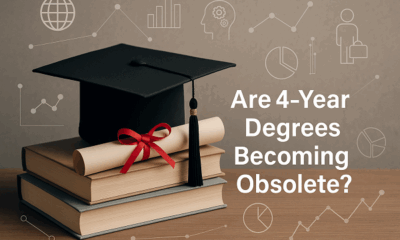

Are 4-Year Degrees Dead? Nikhil Kamath and the WEF Say Lifelong Learning Is Here to Stay
-
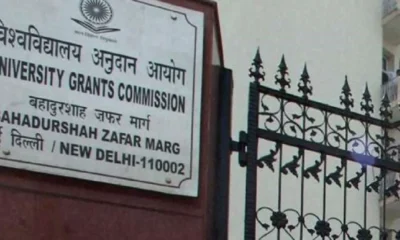

UGC Cracks Down on 89 Institutes Over Anti-Ragging Failures
-


Government Doubles Down on Coaching Centres: New Panel Signals Stronger Regulation Ahead
-
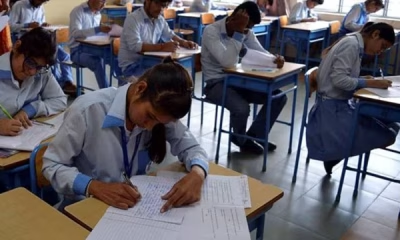

CBSE To Conduct Board Exams Twice for Class 10 from 2026
-


How to Win Back Wandering Minds: Post-Summer Edition
-

Tripura Becomes Third Indian State to Achieve Full Literacy
-
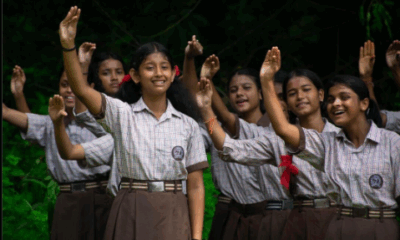

Assam Brings Sign Language to Senior Secondary Classrooms in Landmark Move
-
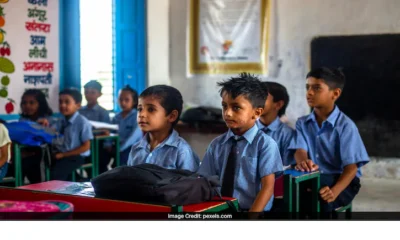

Delhi Schools to Implement Age 6 Rule for Class 1 Admissions from 2026
-
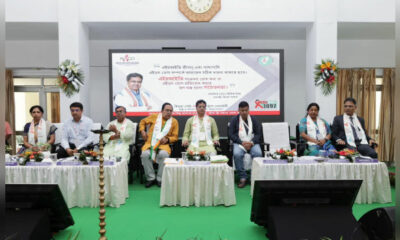

Tripura Adds Sex Education & HIV Awareness to Their Curriculum
Education
How to Win Back Wandering Minds: Post-Summer Edition
Published
1 week agoon
June 24, 2025By
Renu Sharma
The dopamine-rich scrolling in late mornings with amorphous freedom has made our zealous students so comfortable that they are re-entering their classrooms with minds tuned to instant gratification, not delayed rewards. Now the challenge isn’t just academics but to re-engage our bud’s attention and curiosity. Neuroscience backed motivation strategies and intentional school design could prove to be a catalyst as it will bring a positive change and enable the students to learn at a better pace.
1. Rewiring the Dopamine rush with 2 Ps, Purpose and Productivity:
Neuroscience says: Where our brains are functional to seek novelty and purpose on their own, during summer break, the buds often lean into adding the activities to their routine which are unpredictable, quick, and rewarding referring back to instant gratification, these activities may include social media, gaming, and chatting anonymously and grateful to internet and inventions, there are plethora of platforms enabling students to be distracted. And then joining back the school with a gradual drip of delayed academic rewards may seem to be a let-down for students.
Actionable tip: We as facilitators have to be the mystery-solvers channeling their energy into productivity, enlightening them with real-world challenges, interdisciplinary projects, or a mystery to solve that taps into their intrinsic curiosity. Novelty may allow us to reset their attention-even primitive changes in surrounding like rearranged desks, learning outdoors, and using the BALA method to utilize infrastructure, can signal a shift in engagement and productivity.
2. Design for Autonomy and Flow
Neuroscience says:
Neuroscience tells us that motivation really flourishes when students feel they have some control over their learning. The brain’s reward system kicks in when choices are part of the equation, especially regarding how tasks are structured or what content is covered.
Here’s a practical tip: give students structured choices, like deciding which book to dive into, which problem to tackle first, or how they want to present their findings. A design that promotes flow—complete with clear goals, manageable challenges, and instant feedback—helps keep students in that ideal zone, avoiding both boredom and anxiety.
3. Rebuild Social Motivation Through Spaces That Connect
Neuroscience tells us that connecting with peers is a huge motivator, especially after the pandemic. Our brains are wired for social interaction, which plays a key role in how we learn and engage emotionally.
Actionable tip: Create flexible seating arrangements or common areas that encourage group work and casual collaboration. Try incorporating daily activities like “curiosity circles” or peer-led problem-solving sessions to foster a sense of belonging and shared learning objectives.
4. Leverage Routines to Rewire Attention
Neuroscience shows that our habits influence our attention. After a summer of scattered focus, students thrive on rhythmic and consistent routines that help retrain their executive functions.
Actionable tip: Kick off classes with familiar “mind-on” rituals — whether it’s a thought-provoking question, a brief reflection, or a quiet sketch — to help anchor their attention. Consistency breeds comfort, and that comfort boosts confidence.
5. Make Joy a Design Priority
Neuroscience indicates that positive emotions can enhance learning by boosting neuroplasticity. When students (and teachers) experience joy, they’re more likely to engage deeply and retain what they learn.
Actionable tip: Infuse joyful moments into the day — through fun challenges, movement breaks, or a bit of humor. Allow time for students to share what excites them. A joyful classroom isn’t just a nicer place to be; it’s also more effective for learning.
Conclusion: To capture wandering minds, we need to understand how motivation truly works and design both our curriculum and learning spaces to support it. When we ignite curiosity, honor autonomy, and weave joy into the experience, even the sleepiest summer brain can come alive again.
This article is written by:

Renu Sharma
Assistant Director – Systems – Indirapuram Group of Schools
Principal – Indirapuram Public School – Crossings Republik
Education
From Academics to Empathy: Redefining Academic Success
Published
2 weeks agoon
June 17, 2025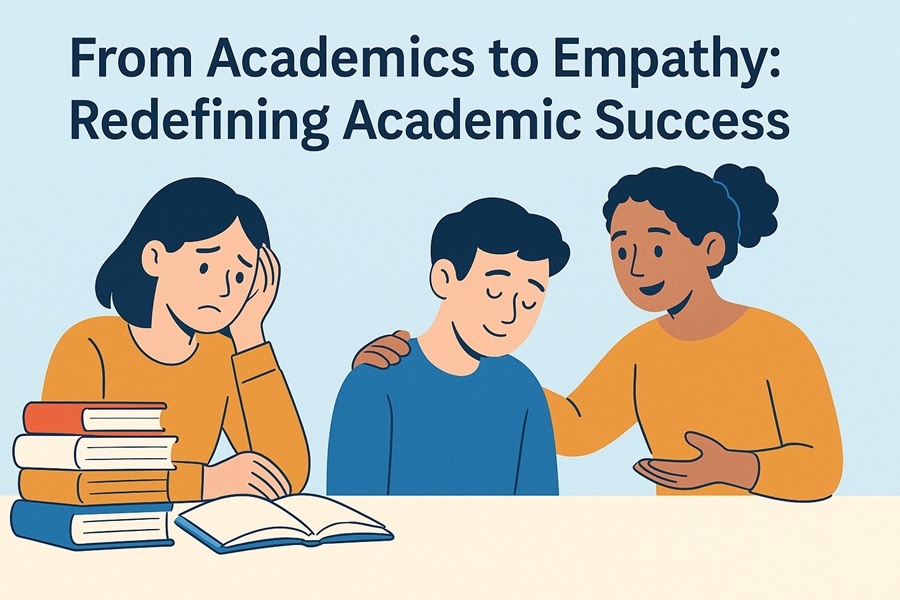
As the world of education evolves, so must our approach to learning. This article explores how empathy, emotional intelligence, and inclusive values must take center stage in 21st-century education, especially within the Cambridge philosophy.
- Moving Beyond Traditional Teaching
The world has shifted from traditional teaching methods to a more humanized approach to imparting knowledge. As educators, we can no longer afford to practice a schooling model that focuses on rote memorisation, academic regurgitation, and a transactional approach to success. The time has come to restructure schools from stressful performance zones to sanctuaries where purpose, empathy, and identity take precedence.
In our ever-evolving world, there is a strong need to overhaul the way education is being imparted. As educators within the Cambridge International community, we understand that now is the time to cultivate learning environments that are havens of purpose, where empathy flourishes, and each student’s unique identity is celebrated.
The Cambridge philosophy, much like India’s National Education Policy (NEP) 2020, encourages us to embrace a well-rounded, interdisciplinary education that instills strong values. This aligns beautifully with global aspirations like the UN’s Sustainable Development Goal 4 (Quality Education) and the growing global emphasis on Social and Emotional Learning (SEL). Our aim as a visionary school extends beyond producing high achievers; we are here to nurture thoughtful individuals, proactive learners, and, most importantly, compassionate human beings.
- The Role of Purpose and Empathy in Learning
And when we talk about empathy, it isn’t just a desirable trait; it’s a cornerstone of transformative education. It fosters a respectful and inclusive classroom, bridging differences and creating a sense of belonging – a principle deeply embedded in the Cambridge approach. Initiatives from organizations like UNESCO, the OECD, and leading universities worldwide highlight the vital role of empathy in learning. Empathetic students become collaborative team players, ethical decision-makers, and engaged global citizens, embodying the Cambridge Learner Attributes.
- Cambridge & NEP 2020: A Shared Vision
In today’s intricate world, I believe that intellectual prowess alone is no longer the sole measure of success. It needs to be nurtured alongside – and often complemented by – emotional and social intelligence. The ability to understand and manage one’s own emotions, navigate social situations with sensitivity, and act with kindness are not just “nice-to-haves”; they are essential skills for thriving in the 21st century and are woven into the fabric of the Cambridge curriculum.
- How IPS Integrates the Cambridge Curriculum
The Cambridge curriculum at Indirapuram Public School, Indirapuram (IPS) is intentionally integrated both vertically and horizontally. As students get older, scaffolded concepts are built upon and nuanced while we work against a compartmentalized view of truth. Students, daily, engage with a host of interconnected ideas across the curriculum to prepare them for the complexity of discourse beyond the walls of our school. Beyond the traditional curriculum, Cambridge endeavors to socially integrate students across grade levels and foster meaningful relationships with their teachers.
As the Cambridge curriculum at IPS evolves, we continue to make it even more responsive to the individual needs of our learners, creating a supportive and welcoming atmosphere. Themes such as values, peace, sustainability, and diversity are integrated across subjects, becoming central threads in our teaching rather than isolated topics. From well-being initiatives to environmental projects like Climate Quest, we are helping the students connect academic learning with real-world empathy and action, especially through engaging, experiential learning.
Leadership within a Cambridge school plays a crucial role in setting this tone. Those who guide our schools shape their very essence, influencing the entire learning community. When leaders model empathy, authenticity, and a clear sense of purpose, our schools become more than just educational institutions; they become nurturing environments where humanity thrives.
“Your children are not your children… They come through you but not from you.”
—Kahlil Gibran
Let us reimagine education—not just as preparation for the future, but as a meaningful and purposeful way of living in the present.
This article is authored by Dr Ashish Mittal
Principal || CBSE & Cambridge Leader
INDIRAPURAM PUBLIC SCHOOL, INDIRAPURAM
Education
History, Identity, and Pride: Books That Make Sense of Being You
Published
3 weeks agoon
June 11, 2025
Every June, rainbow flags go up, corporate logos get a splash of colour, and the words Pride Month fill our timelines. But behind this month-long celebration lies something far deeper — an entire universe of history, identity, and stories that often remain outside the margins of our textbooks, especially here in India.
When we talk about queer histories, most people quickly say: Pride is an American concept. And yes, the Stonewall Riots of 1969 are often marked as the start of the modern LGBTQIA+ rights movement. But to believe that queer identities only exist where the parades happen is both lazy and inaccurate. Because if you look carefully — at temple walls, ancient texts, and folklore — you’ll find that India, too, has always had queer stories. We’ve just failed to write them down as part of our “official” history.
Take Mahabharat — where Shikhandi, a warrior born as a woman but raised as a man, plays a crucial role in Bhishma’s death. Or Brihannala, Arjuna’s year-long identity as a eunuch. Look at Khajuraho or Konark temples — where fluid sexual depictions exist without judgement. Even Mughal records speak softly of same-sex companionship. Yet none of these ever made it to our history chapters. Why? Because of historiography — the selective way in which history gets written, where lived experiences are often filtered through political, cultural or moral lenses. What we’re left with is history that’s comfortable — not always complete.
But while adults debate culture wars, there’s a rising generation of Indian teens who are quietly asking braver questions. More kids today — some as young as 12 or 13 — are exploring their gender identities, sexual orientations, or even just the vocabulary to describe what they feel. And many of them don’t know who to turn to. Some are scared of being mocked by peers. Others fear judgement from family. Teachers, too, often don’t have the training or language to guide them. The result? Stories like Aarvey Malhotra’s — a young boy who couldn’t bear the bullying he faced for his gender expression — remind us how deadly this silence can be.

Arvey Malhotra with his mother Aarti Malhotra
So where can these kids turn? Sometimes, the safest place to meet yourself is inside a book.
Here’s a small, carefully chosen list of books (curated with the help of AI) that may help teens (13+) begin that journey of understanding — about themselves or others:
1. Beyond the Gender Binary by Alok Vaid-Menon

Written by a gender non-conforming writer of Indian origin, this is a short, deeply accessible introduction to gender fluidity.
2. The Boy & The Bindi by Vivek Shraya (Illustrated by Rajni Perera)

While more suitable for slightly younger kids, this beautifully illustrated book helps children embrace non-conformity and Indian culture together.
3. Pride: The Story of Harvey Milk and the Rainbow Flag by Rob Sanders
An excellent way to understand where the modern pride movement began, told through the story of the Pride flag’s creation.
4. Gender Identity: Beyond Pronouns and Bathrooms by Maria Cook

Written for teens, this breaks down gender identity, expression, dysphoria and non-binary identities in simple, compassionate language.
5. The Queer Hindu: A Spiritual Perspective by Devdutt Pattanaik (Selected Essays)
While not strictly a children’s book, certain essays by Pattanaik can open doors for older teens who wish to explore how queerness exists within Indic traditions.
6.Pet by Akwaeke Emezi

A young-adult novel that tackles identity, family, and justice in a tender, imaginative way by a non-binary author.
7. When Aidan Became a Brother by Kyle Lukoff
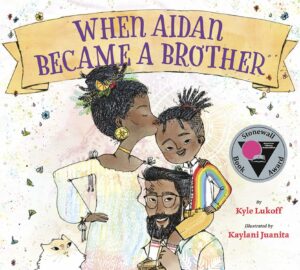
For kids exploring trans experiences, this picture book offers a gentle, positive portrayal of gender transition.
(Book covers- Amazon.in, Goodreads)
So why does Pride matter in schools?
This isn’t about imposing ideologies — it’s about offering answers to kids who are already asking. And if we want fewer kids like Aarvey to feel alone, confused, or ashamed, we need to stop treating gender and sexuality like topics too complicated for them to understand. They’re not. What they need are trusted spaces, the right words, and adults who listen without first judging.
After all, education was always meant to make us more human — and queerness, in all its forms, is part of that humanity.
Edutainment
Of Formulas and Frames: Why India Must Stop Dividing Science and Art
Published
3 weeks agoon
June 10, 2025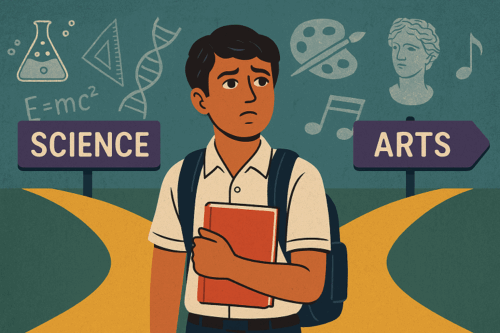
In a recent interview with Lallantop, Varun Grover—acclaimed writer, lyricist, comedian, and filmmaker—hit upon a truth so striking, it should’ve been plastered across school walls: India has lost its plot in nurturing innovators. And the reason? We’ve boxed our subjects—and our students—into separate lanes. Science on one side, art on the other. One wears lab coats, the other paints canvases. They rarely, if ever, meet.
Grover put it sharply: in India, we’ve created a caste-like hierarchy between subjects. Science students often carry the burden of “doing real work,” while arts students claim the higher ground of exploring life and meaning. The result? A deep-rooted disconnect. And it begins early—often in Class 11, when students are forced to pick a stream and silently abandon the rest of their interests.
But must a physicist give up poetry? Must a musician ignore algorithms?
It doesn’t have to be this way. At MIT, one of the world’s top science and tech universities, PhD students in Physics can take courses in music, design, or history—and earn credits for them. Why? Because innovation thrives where disciplines intersect. Because understanding how a flute works can teach you more about frequencies than a textbook diagram ever will.
Consider Steve Jobs, who credited a college calligraphy class for inspiring the Mac’s typography. Or Indian innovator Sonam Wangchuk, whose work in Ladakh seamlessly blends engineering with local art, architecture, and sustainability. His Himalayan Institute of Alternatives (HIAL) teaches future engineers and designers side-by-side, breaking the very silos our system has normalised.
Even Nobel laureate Richard Feynman once said, “I have a friend who’s an artist… He’ll hold up a flower and say, ‘Look how beautiful it is,’ and I’ll agree. But I can also see beauty in how the flower works—its structure, its physics. Science only adds to the beauty.”
And yet, in India, we continue to teach these as separate things. We train students to clear tests, not to create. We push them into IIT-JEE coaching at 13 and expect them to build world-changing ideas at 25.
This isn’t just an academic issue—it’s cultural. Our textbooks rarely reference architecture as both engineering and aesthetic legacy. Our school plays and science exhibitions are held in different corners of the building. Our awards are either for “Best Innovation” or “Best Performance”—never both.
The irony is painful. A land of classical music rooted in maths. A civilisation that built temples with astronomical precision. A country that once integrated dance, sculpture, and geometry with everyday life. And yet, we’ve chosen to modernise by compartmentalising.
It’s time we remember what Varun Grover reminded us of: the pyramid is both an engineering feat and an artistic marvel. And so is the human mind.
Let’s build an education system that stops asking children to choose between knowing and feeling, between numbers and narratives.
Let’s stop making them pick a lane—when the real magic happens at the crossroads.
Education
World Environment Day: Why Your School’s Environmental Education Needs a Cleanup
Published
4 weeks agoon
June 5, 2025
It’s June 5. There’s a poster-making competition happening in the library. “Say No to Plastic,” one child writes, her glitter pen catching the sunlight. In the background, a teacher sips from a plastic bottle of mineral water. On the ground — a single dustbin, filled with half-eaten sandwiches, the plastic wrappers they came in, and the poster that didn’t win.
Welcome to World Environment Day. The annual ritual of colouring inside the lines of climate awareness, only to throw the sketch away at 3:00 p.m.
And nowhere is this performance of eco-consciousness more apparent than in the average Environmental Studies (EVS) class. A subject that, in theory, is about the environment. In practice, it is about completing the syllabus before the assessments begin.
EVS is full of the right words: sustainability, waste segregation, reduce-reuse-recycle. It teaches children the parts of a plant, but not how to grow one. It tells them about carbon footprints, but not about the quiet pride of switching off a fan when they leave a room.
It is, in short, a subject that ends at the bell. Let’s pause and ask: how many schools actually segregate their waste? How many have separate bins for wet and dry garbage — not just during inspection week or annual day, but on a random Tuesday in August?
Most schools don’t have a waste problem. They have a waste denial problem.
Because admitting there’s a problem would mean someone has to do something about it. And doing something is messy. It requires time, training, tantrums. It requires telling people they can’t use fifteen thermocol plates for a two-hour workshop. It requires building a system where children see that the habits they are being asked to adopt are not just lesson objectives, but lifestyle choices being modelled by the adults around them.
Right now, most EVS classes are like that school function where the Chief Guest arrives in a diesel SUV to plant a sapling. Ceremonial. Shallow. Slightly offensive.
But here’s the good news: children get it. Better than we think. They’re not too young to understand why the cafeteria needs to stop using plastic spoons. They don’t need a unit on climate change to know that the AC doesn’t have to be set to freezing for learning to happen.
They just need one thing: to see the grown-ups walking the talk.
Start small. Set up separate bins — label them, colour-code them, talk about them. Let kids bring waste from home and run a sorting drive. Make a habit of auditing your school’s paper usage. Assign class monitors for turning off switches. Let kids design posters that don’t end up in the bin — or better yet, design the bins themselves. And while you’re at it, stop calling it an EVS period.
Call it the lab of life.
If you really want children to learn how to care for the world, don’t just teach them the names of forests. Teach them how to keep their classrooms clean. Don’t just mention Greta Thunberg in a chapter. Ask what they would skip school for. Don’t say “reduce-reuse-recycle” like it’s a rhyme. Say it like it’s a revolution.
And show them the bin.
Education
Curriculum Controversy at Delhi University: Academic Voices Clash Over Syllabus Overhaul
Published
1 month agoon
May 27, 2025
Delhi University’s Executive Council (EC) has approved sweeping curriculum revisions that have sparked sharp protests from faculty members, igniting a fresh debate over academic freedom, ideological influence, and the future of higher education in India. The changes, ratified during the EC’s 1,275th meeting, affect multiple departments including Psychology, Sociology, and English, and introduce new programmes in journalism and nuclear medicine.
Among the most contentious shifts is the removal of conflict-based case studies from the Psychology of Peace paper. Case references to Kashmir, Palestine, India-Pakistan relations, and the Northeast have been replaced with conflict-resolution examples drawn from Indian epics like the Mahabharata and Bhagavad Gita. Similarly, a Sociology paper has dropped foundational thinkers like Karl Marx and Thomas Robert Malthus, along with key sections such as the Sociology of Food and the critical lens on the Sociology of Law.
Faculty members are sounding the alarm. As per a story in Business Standard, EC member and Associate Professor at Kirori Mal College, Rudrashish Chakraborty, called the changes “a complete disregard for disciplinary expertise” and warned they could severely damage DU’s global academic standing.
At the heart of the backlash is a deeper concern about ideological overreach in curriculum design. Critics say the move replaces rigorous, research-based frameworks with selectively religious narratives, undermining the pluralism that once defined Indian academia.
Why These Topics Were in the Curriculum in the First Place
Incorporating geopolitical issues like Kashmir and Palestine in social science syllabi wasn’t about courting controversy—it was about helping students understand conflict, diplomacy, and peace-building through lived realities. Scholars like Marx and Malthus, often labelled as ideologues, contributed frameworks that shaped global discourse on inequality, population, labour, and social justice. To erase them from academic memory is not just selective—it’s intellectually dishonest.
Their inclusion wasn’t about promoting one ideology over another but about exposing students to a spectrum of thought. If academic institutions stop encouraging intellectual plurality, they risk becoming echo chambers that simply mirror prevailing politics.
What Could Have Been Done Differently
If the aim was truly to Indianise or decolonise the curriculum—as has been cited in many recent reforms—it could have been done with scholarly rigour. Including Indian thinkers alongside global ones, offering critical engagement rather than replacement, and developing interdisciplinary modules that draw on Indian social realities would have strengthened rather than diluted the curriculum.
A meaningful curriculum reform should be inclusive, consultative, and pedagogically sound. Instead, these changes appear abrupt and top-down, with several faculty members alleging they were not adequately consulted. As one member remarked, “Modernisation cannot come at the cost of academic autonomy.”
The counter to a whitewashed curriculum should not be to do the exact opposite. Figures like Karl Marx are not just ideologists; their legacies extend beyond nation-states. They presented global ideas that remain relevant to Indian society, especially in an age grappling with inequality and labour rights.
And religion—while an important part of many societies—must never dominate education policy. When one faith is elevated in academic materials meant for students of all backgrounds, it chips away at the secular fabric of our democracy.
Replacing complex geopolitical issues with religious scripture is not only pedagogically flawed—it’s, frankly, a dangerous precedent.
New Programmes and Policy Decisions
Beyond the curriculum overhaul, DU has also announced the launch of a two-year M.A. in Journalism in both Hindi and English, and a BSc in Nuclear Medicine Technology, to be offered at the Army Hospital (R&R) for Armed Forces Medical Services personnel. The EC also introduced a new policy for determining teacher seniority, with age taking precedence over API scores when qualifications are equal.
A committee has been constituted to assess the implications of a DoPT circular mandating periodic review of employees aged 50 and above—raising concerns about forced retirement policies within the university system.
As the NEP rollout moves ahead, universities like DU need to walk the path wisely. Reforms should fuel learning, not push a story. Education isn’t meant to box students into ideologies—it’s meant to open minds, spark debate, and shape citizens who can think for themselves. Our classrooms should dig deeper, not go narrow. We can’t afford to swap knowledge for one-sided thinking.
Education
Kerala Reimagines Schooling: Social Awareness Over Syllabi in Bold New Reforms
Published
1 month agoon
May 22, 2025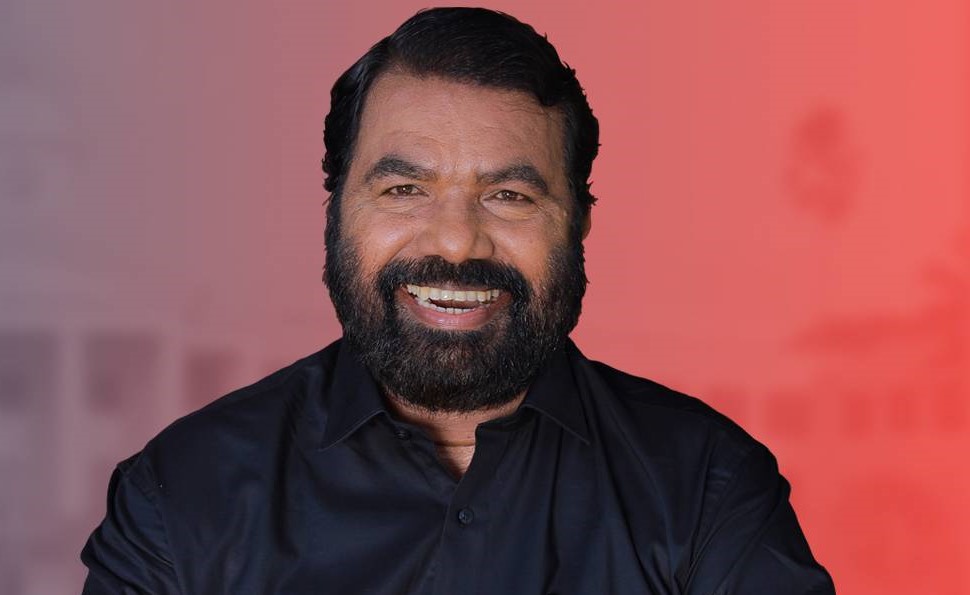
Kerala’s Department of Public Education is steering its schools in a direction few others in the country have ventured. With a growing emphasis on emotional well-being, civic sense, and digital discipline, the state has announced a series of reforms that aim to reframe the purpose and process of schooling in the 2025–26 academic year.
The most striking of these changes is the introduction of a two-week social awareness programme at the beginning of the school year for students from Classes 1 to 10, starting June 2. Higher secondary students will take part in a shorter version of the initiative from July 18. In this period, traditional textbooks will be set aside in favour of sessions that explore topics like drug abuse prevention, responsible social behaviour, emotional regulation, hygiene, gender sensitivity, and legal awareness.
The programme was designed in consultation with experts from the Police Department, Social Justice Ministry, Child Rights Commission, SCERT, and others, ensuring that content is both relevant and age-appropriate. Arts and sports will also be given space during this period, further promoting a holistic approach to education.
In addition to curriculum shifts, the department has issued a directive asking teachers not to create or share reels and videos on social media platforms during school hours. This move comes in light of growing concerns about distractions and the professional image of educators in the digital age.
These reforms reflect a deeper philosophical shift. Education Minister V Sivankutty’s vision seems to be one where schooling is not only about academic advancement but also about nurturing responsible, resilient individuals. While some critics may question the timing or implementation capacity of these reforms, the global education landscape suggests Kerala may be on the right track. Countries like Finland and New Zealand have already incorporated social-emotional learning and life skills into their core curricula, recognising that academic performance alone does not prepare students for an unpredictable world.
Are these reforms necessary? Given rising cases of student stress, substance abuse, and digital addiction, the answer may well be yes. By introducing these changes early in the academic calendar, Kerala is making a case for front-loading empathy, awareness, and life-readiness—concepts that are increasingly critical but often delayed in traditional schooling.
Whether this is a bold experiment or the beginning of a national shift remains to be seen. But there’s little doubt that other states will be watching closely.
Education
Human (Soft) Skills: The Missing Piece in School Curriculums
Published
1 month agoon
May 19, 2025
As the future of work continues to evolve at a breakneck pace, one thing is becoming increasingly clear: the ability to be human is our greatest advantage. In an age where automation and AI are reshaping industries, it’s no longer technical proficiency that sets students apart, it’s human skills.
And yet, our schools aren’t keeping up.
Globally, education systems remain heavily weighted towards academic and technical achievement. While these are certainly important, they no longer tell the whole story. Employers across sectors are united in their call for graduates who can communicate effectively, manage stress, work in diverse teams, and adapt to constant change.
Deloitte’s 2019 report The path to prosperity: Why the future of work is human found that by 2030, two-thirds of all jobs created will be reliant on human capabilities. These include empathy, creativity, collaboration, emotional intelligence, and the ability to learn continuously. All of which are underdeveloped in our current school structures.
This is not a theoretical problem. The impact is already being felt. Research consistently shows that up to 68% of high school students report feeling anxious, underprepared, and lacking the confidence to take the next step into work or further education. The transition from school to career requires more than ‘knowledge acquisition,’ it requires self awareness.
Human skills are the gateway to that self-awareness. They help students identify their strengths, regulate their emotions, communicate effectively, and develop resilience. These are the foundational competencies that allow young people to navigate uncertainty and thrive in a rapidly changing world.
Importantly, these skills are not innate. They are learned, practised, and refined over time — just like maths, science, or coding. When introduced early, human skill development empowers students with confidence and clarity. They learn how to navigate social complexity, resolve conflicts, deal with failure, and see growth as a lifelong journey rather than a fixed destination.
So, why aren’t we teaching these skills in schools as deliberately as we teach literacy or numeracy?
Perhaps it’s because human skills feel harder to measure. But we must shift our mindset. What we value, we measure — and what we measure, we teach. Forward-thinking educators and school leaders across the globe are beginning to incorporate social-emotional learning, strengths-based development, and mental wellbeing into their curriculums, recognising that these are not “nice-to-haves” — they are must-haves.
Imagine a student graduating from high school with not just academic marks, but a toolkit of emotional and interpersonal strengths: an understanding of who they are, what drives them, and how to manage themselves under pressure. Imagine a generation that sees learning as a lifelong pursuit and failure as a stepping stone rather than a setback.
This is the future we must design for.
It starts by giving human skills a seat at the table – not as a supplement to education, but as a core component of it. We need to empower educators with the tools and frameworks to deliver this kind of learning and where necessary provide expert facilitators to avoid adding more to the workload of educators. We need to engage students in real, reflective experiences that help them connect their inner world with the outer demands of life and work.
The most meaningful educational innovation doesn’t just teach students to do more. It teaches them to be more – to be self-aware, to be empathetic, to be adaptable. That’s how we create work-ready individuals and life-ready citizens.
The world doesn’t need more rote learners. It needs more critical thinkers, resilient leaders, and emotionally intelligent problem solvers. And the time to cultivate them is now – in our classrooms, through our curriculums, and with intention.
This article is authored by Renata Sguario
Renata Sguario is the founder and CEO of Maxme and the current chairman of the board of Future First Technology (formerly known as PS+C Limited), listed on the ASX (FFT), one of Australia’s leading end-to-end ICT and digital consulting organisations.
Education
Rewriting Ambedkar: Why Students Must Know the Man Beyond the Constitution
Published
3 months agoon
April 14, 2025
Ambedkar Jayanti Special | ScooNews
Dr. Bhimrao Ramji Ambedkar. Most students in India recognise the name—largely as the “Father of the Indian Constitution.” If you ask a Class 10 student what Ambedkar stood for, you’ll likely get a respectable summary: chairperson of the Drafting Committee, architect of constitutional equality, and perhaps a passing reference to his fight against untouchability. But that’s where it ends.
This is not a failure of our students. This is a failure of our books.
Because Babasaheb Ambedkar was not just a jurist or a political figure to be summarised in three bullet points under Civics. He was one of the most radical, intellectually fierce, and unapologetically liberal minds India has ever known. And if we are talking about modern India—its democracy, its dissent, its diversity, its demands for dignity—then Dr. Ambedkar isn’t just relevant, he is foundational.
And yet, he remains tragically under-read and under-taught.
The Man We Didn’t Read Enough About
Ambedkar’s life is a masterclass in resilience, intellect, and reform. Born into the most marginalised community in India, he went on to become the first Indian to pursue a doctorate in economics from Columbia University, studied law at the London School of Economics, and returned to a country that still wouldn’t allow him to sit beside upper-caste students.
But Ambedkar did not stop at personal success. He turned his education into ammunition. His writings dissected caste not just as a social issue but as an economic and psychological reality. In works like Annihilation of Caste, he boldly challenged not just the religious orthodoxy but also Mahatma Gandhi—a sacred figure for many—in ways that were considered almost blasphemous at the time. And even today.
Unlike Gandhi, who sought reform within the caste system, Ambedkar demanded its demolition. Where Gandhi appealed to morality, Ambedkar appealed to reason, law, and modernity.
This discomfort with Ambedkar’s sharp, unflinching views is perhaps why our textbooks package him safely—as the dignified lawyer with a pen, not the roaring revolutionary with a voice.
More Than a Constitution-Maker
To say Ambedkar gave us the Constitution is both true and painfully incomplete.
- He gave us the right to constitutional morality, the idea that the Constitution isn’t just a set of rules but a living document that must be interpreted in the spirit of liberty, equality, and justice.
- He envisioned reservations not as charity but as corrective justice.
- He believed that a true democracy must have “social democracy” at its base—not just the right to vote but the right to dignity in everyday life.
- And he warned, prophetically, that political democracy without social democracy would be India’s downfall. He was not just designing India’s governance system, but was rather trying to develop India’s moral spine.
A Voice for Individual Freedom—Louder Than We Knew
“I measure the progress of a community by the degree of progress which women have achieved.”- Bhim Rao Ambedkar
Ambedkar’s liberalism was far ahead of his time. He consistently advocated for individual rights in the truest sense. There’s documented evidence that he argued for the decriminalisation of same-sex relationships, seeing it as an issue of individual freedom long before such conversations entered our legal discourse.
His economic ideas—rarely taught—favoured state-led industrialisation, fair wages, and social security decades before these became policy buzzwords. His writings on women’s rights were equally progressive, particularly through the Hindu Code Bill, which sought to grant women equal property rights, rights to divorce, and freedom in marriage—a bill so radical for its time that it was shelved, only to return years later in diluted forms.
Why Today’s Students Need Ambedkar—Unfiltered
In an age where freedom of speech is contested, when marginalised voices still struggle for space, when gender and sexuality are still debated as ‘issues’ instead of identities—Ambedkar is the teacher we didn’t know we needed.
We need to stop sanitising him for our syllabus. We need high schoolers to read Annihilation of Caste in their literature classes and understand the intersections of caste, religion, and gender in history—not just from an upper-caste nationalist lens but from the view of the people who fought to be seen as human.
We need Ambedkar in economics classrooms, debating his views against today’s neoliberal models.
We need to introduce him as an intellectual, a radical thinker, a critic of Gandhi, a reformer of Hindu personal law, a journalist, a linguist, a labour rights advocate, a rebel with a cause.
Because the freedoms we enjoy today—freedom of religion, freedom of expression, freedom to love, to choose, to protest, to dream—all have Ambedkar’s fingerprints on them.
If our education system truly believes in nurturing critical thinkers and empathetic citizens, then Dr. Ambedkar cannot remain a footnote or a ceremonial portrait garlanded on April 14th.
He must be read. He must be debated. He must be understood. Because the more we know about Ambedkar, the more we know about ourselves—and the democracy we’re still trying to build.
Education
In a Shocking Move, US Supreme Court Backs Trump’s Cuts to Teacher Training Grants
Published
3 months agoon
April 7, 2025
In a decision that has sent shockwaves through the global education community, the US Supreme Court has permitted the Trump administration to go ahead with slashing $600 million in teacher training grants—funds that supported Diversity, Equity, and Inclusion (DEI)-related programs. The 5-4 ruling is being seen as a major blow to the foundational ideals of inclusive education.
The affected grants, including the Teacher Quality Partnership and Supporting Effective Educator programs, were created to recruit and train educators, particularly for rural and underserved communities. These programs were designed not just to address America’s growing teacher shortage but also to help educators understand and embrace student diversity—a critical aspect of modern pedagogy.
Trump’s Department of Education has argued that the programs funded “divisive ideologies.” A standardised letter sent to grant recipients stated that the department no longer supports programs promoting DEI or “any other initiatives that unlawfully discriminate on the basis of race, colour, religion, sex, national origin, or other protected characteristics.”
But to education experts, the decision is not just bureaucratic—it’s deeply symbolic.
When the world needs more aggressive teacher training, not less, this ruling feels like a backward leap. At a time when classrooms are more diverse than ever—culturally, neurodivergently, socio-economically—cutting back on training that helps teachers manage inclusive classrooms could spell disaster for the next generation of learners. Teachers make every other profession possible. You cannot take away their training and expect education to survive.
DEI is not a trending buzzword—it is a matter of human dignity and rights. When teachers are better equipped to understand different learning needs and cultural contexts, every child benefits. These funds were not “divisive”; they were the very backbone of equitable education.
This Supreme Court ruling comes in the wake of Trump’s broader effort to dismantle the Department of Education itself, part of his controversial plan to downsize federal governance. An executive order to “eliminate” the department was signed in March 2025, though its full dissolution still requires congressional approval.
Justice Elena Kagan, dissenting in the ruling, called the decision “a mistake,” adding that nowhere in the government’s defence was there a legal justification for cancelling the grants. Fellow Justice Ketanji Brown Jackson said the terminations were contrary to Congress’s original intent of ensuring quality education for all.
While the US wrestles with these policy reversals, the international education community must remain vigilant. This is not just a national matter. The US has long set the tone for education policy worldwide. If other countries begin to emulate this regression, we risk reversing years of progress toward inclusion, understanding, and equality in education.
Let us be clear: Training teachers is not a gimmick. It is a necessity. A minimum standard.
We hope that while the world watches, it does not follow suit.
Newsletter

Indian Astronaut Shubhanshu Shukla to Connect with School Students Live from Space

Are 4-Year Degrees Dead? Nikhil Kamath and the WEF Say Lifelong Learning Is Here to Stay

UGC Cracks Down on 89 Institutes Over Anti-Ragging Failures

Government Doubles Down on Coaching Centres: New Panel Signals Stronger Regulation Ahead

CBSE To Conduct Board Exams Twice for Class 10 from 2026

How to Win Back Wandering Minds: Post-Summer Edition
Tripura Becomes Third Indian State to Achieve Full Literacy

Assam Brings Sign Language to Senior Secondary Classrooms in Landmark Move

Delhi Schools to Implement Age 6 Rule for Class 1 Admissions from 2026

Tripura Adds Sex Education & HIV Awareness to Their Curriculum

Four Indian Schools Shine on the Global Stage at World’s Best School Prizes 2024

Centre Urges 7 States to Consider Common Board Amid Alarming Student Failure Rates

IIT Delhi Leads India in the QS Rankings 2026; MIT Tops Globally

Chandigarh, Punjab Lead in School Education Rankings; Meghalaya Trails Behind

Maharashtra Revises Policy on Third Language in Schools, Hindi No Longer Mandatory

From Academics to Empathy: Redefining Academic Success

India Sends 20 Students to Japan Under Sakura Science Programme 2025

Delhi Schools to Observe June as Anti-Malaria Month, Says DoE

Telangana Govt Ties Up With 6 NGOs to Revolutionise Teaching in Govt Schools

History, Identity, and Pride: Books That Make Sense of Being You

Delhi Government Clears Ordinance to Regulate Private School Fees After Protests

Of Formulas and Frames: Why India Must Stop Dividing Science and Art

43-Day Hunger Strike Ends as Govt Backs Teachers’ Demands

OpenAI Academy Launches in India to Democratise AI Education for Students, Teachers, and Startups

World Environment Day: Why Your School’s Environmental Education Needs a Cleanup

Is Your School Following These Mandatory CBSE Committees?

CBSE’s ‘Sugar Boards’ Initiative: Tackling the Sweet Crisis in Indian Schools

“Be the Change in a Changing World”: Anita Karwal and Anju Chazot Reflect on NEP 2020
CBSE Warns Dummy School Students May Be Barred from Board Exams

Maharashtra to Regulate Pre-Primary Education with New Law Aligned to NEP 2020

MAHAJYOTI’s Book Distribution Scheme to Empower 7,000 OBC Students Preparing for JEE/NEET & MHT-CET

China Embarks on Ambitious AI-Driven Education Reform to Build a ‘Strong Education Nation’ by 2035

John King’s Book ‘Teacher By Teacher’: A Global Tribute to the Transformative Power of Education

‘Baalpan ki Kavita’ Initiative Launched to Restore Indian Rhymes for Young Learners

Rewriting Ambedkar: Why Students Must Know the Man Beyond the Constitution

CBSE Introduces Mandatory Bridge Course for Classes 6 to 12 in Chhattisgarh Under NEP 2020

CBSE Mandates 50-Hour Annual Training for Teachers, Declares STEM as 2025 Theme

India Bids Farewell to NEP Architect Dr K. Kasturirangan

Pradhan Mantri Rashtriya Bal Puraskar 2025: Nominations Now Open for India’s Young Achievers

Banu Mushtaq’s International Booker Win Is a Wake-Up Call for Indian Schools to Reclaim Literature

NCERT Class 7 Textbooks Updated: Mughals Removed, Focus on Indian Ethos and Pilgrimage

Delhi Government Cracks Down on Dummy Schooling; Over 600 Schools Inspected, 10 Issued Notices

Delhi Approves Landmark Bill to Regulate School Fees Across 1,677 Institutions

The Ethics of AI Art in Education & Nostalgia: The Ghibli Effect

Operation Sindoor and Operation Abhyaas: Navigating School Safety and Student Well-being Amid Rising Tensions
CBSE Revises Class 10, 12 Curriculum: Biannual Exams, New Subjects and Flexible Passing Criteria Introduced

Harvard Stands Its Ground: Harvard Faces ₹18,400 Crore Funding Freeze After Rejecting Trump Administration’s Demands

CUET-UG 2025 Likely to be Postponed, Fresh Dates Expected Soon

Aalamaram 2025: Where Indian Educators Came Together to Grow, Reflect, and Lead

Trump Signs Executive Order to Promote AI Integration in U.S. K-12 Education
SGEF2023 | Special Address by Rama Datt, Trustee, Maharaja Sawai Man Singh II Trust, Jaipur

ScooNews | After Movie | ScooNews Global Educators Fest 2023

Aftermovie | NIES2 UP Chapter | 21 Jan 2023

WEBINAR | Gamification in Education: How Digital Badges Can Boost Student Motivation and Engagement

ScooNews | WEBINAR| Importance of Physical Activity for Children at School | Plaeto

SCOONEWS | WEBINAR | WHY DIGITIZING YOUR SCHOOL IS A MUST | TEACHMINT

Keynote Address | Lakshyaraj Singh Mewar

Anurag Tripathi, Secretary, CBSE at SGEF2022

How schools can nurture every student’s genius

Aftermovie | SGEF2022 | Jaipur

Li Andersson | Minister of Education | Finland

Anurag Tripathi, Secretary, Central Board of Secondary Education (CBSE) discusses NEP2020

ScooNews | Early Ed Asia 2019 | Aftermovie
#PodarECEconf : Pursuing quality ECE

#CBSE Class XII #Results #Highlights

The interesting story of India’s educational system | Adhitya Iyer

A young scientist’s quest for clean water

The Danger of Silence: Clint Smith

National Digital Library of India is an initiative by HRD Ministry

Remembering Kalpana Chawla on her birthday!

Message from Sadhguru for Students!
Message from Sadhguru for Students!

The Untapped Genius That Could Change Science for the Better

Eddy Zhong: How school makes kids less intelligent TEDxYouth@Beacon

#TEDxCanberra : What if every child had access to music education…
Trending
-
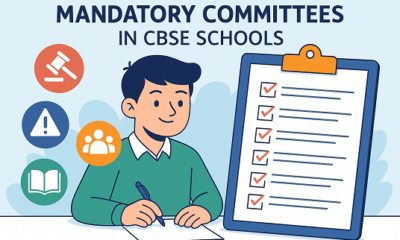
 Education3 months ago
Education3 months agoIs Your School Following These Mandatory CBSE Committees?
-

 Education1 month ago
Education1 month agoCBSE’s ‘Sugar Boards’ Initiative: Tackling the Sweet Crisis in Indian Schools
-
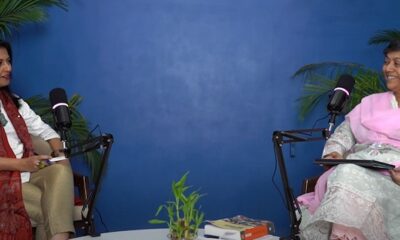
 Education3 months ago
Education3 months ago“Be the Change in a Changing World”: Anita Karwal and Anju Chazot Reflect on NEP 2020
-
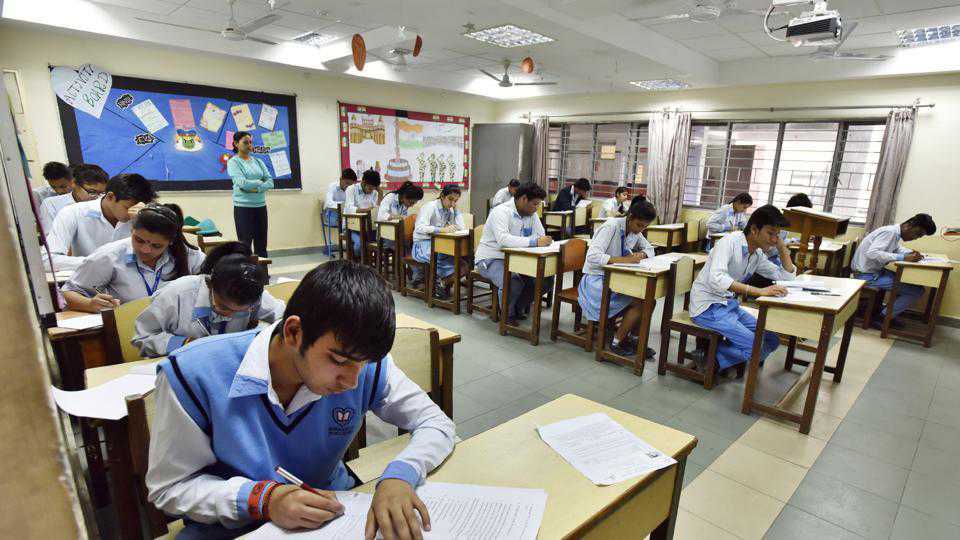
 News3 months ago
News3 months agoCBSE Warns Dummy School Students May Be Barred from Board Exams
-
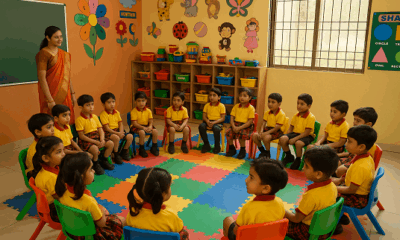
 Education2 months ago
Education2 months agoMaharashtra to Regulate Pre-Primary Education with New Law Aligned to NEP 2020
-
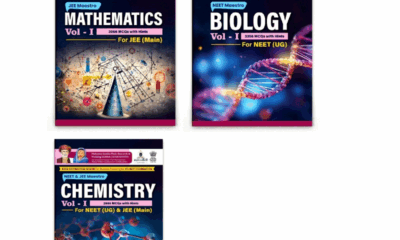
 Education3 months ago
Education3 months agoMAHAJYOTI’s Book Distribution Scheme to Empower 7,000 OBC Students Preparing for JEE/NEET & MHT-CET
-
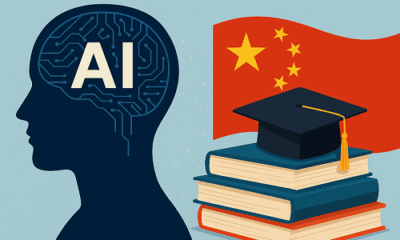
 Education3 months ago
Education3 months agoChina Embarks on Ambitious AI-Driven Education Reform to Build a ‘Strong Education Nation’ by 2035
-
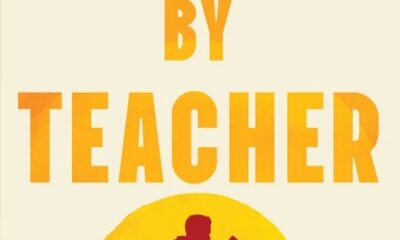
 Education2 months ago
Education2 months agoJohn King’s Book ‘Teacher By Teacher’: A Global Tribute to the Transformative Power of Education
-
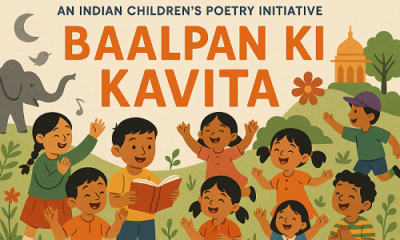
 Education3 months ago
Education3 months ago‘Baalpan ki Kavita’ Initiative Launched to Restore Indian Rhymes for Young Learners
-

 Education3 months ago
Education3 months agoRewriting Ambedkar: Why Students Must Know the Man Beyond the Constitution







